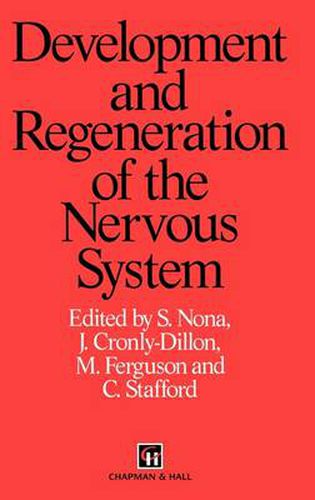Readings Newsletter
Become a Readings Member to make your shopping experience even easier.
Sign in or sign up for free!
You’re not far away from qualifying for FREE standard shipping within Australia
You’ve qualified for FREE standard shipping within Australia
The cart is loading…






This title is printed to order. This book may have been self-published. If so, we cannot guarantee the quality of the content. In the main most books will have gone through the editing process however some may not. We therefore suggest that you be aware of this before ordering this book. If in doubt check either the author or publisher’s details as we are unable to accept any returns unless they are faulty. Please contact us if you have any questions.
The application of modern techniques from molecular biology to problems of development, coupled with new methods of immunocytochemical staining have brought a revolution to our understanding of pattern formation in the developing embryo and of the cellular interactions that regulate nervous tissue regeneration in the mature organism. Current work on the trophic and cellular interactions that regulate the growth and guidance of regenerating nerves offer hope that medicine may one day be able to help the neurologically damaged patient. The chapters in this volume encompass a diversity of approaches to the problems of development. The authors, which include a representative sample of some of the leading figures in developmental neurobiology, have directed their attention at six main themes: pattern formation in the early embryo; theories of spatial pattern formation in development and the formulation of morphogenic rules; nerve growth and regeneration within the central nervous system; the role of glia in nervous system development and regeneration; cell recognition in neural histogenesis and as it affects the dynamics of axonal growth, target recognition and axonal regeneration; nervous system plasticity and memory. In selecting the topics for this volume the aim of the editors is to focus upon recent highlights in developmental neurobiology as well as to explore the problems and prospects for future applications in medicine.
$9.00 standard shipping within Australia
FREE standard shipping within Australia for orders over $100.00
Express & International shipping calculated at checkout
This title is printed to order. This book may have been self-published. If so, we cannot guarantee the quality of the content. In the main most books will have gone through the editing process however some may not. We therefore suggest that you be aware of this before ordering this book. If in doubt check either the author or publisher’s details as we are unable to accept any returns unless they are faulty. Please contact us if you have any questions.
The application of modern techniques from molecular biology to problems of development, coupled with new methods of immunocytochemical staining have brought a revolution to our understanding of pattern formation in the developing embryo and of the cellular interactions that regulate nervous tissue regeneration in the mature organism. Current work on the trophic and cellular interactions that regulate the growth and guidance of regenerating nerves offer hope that medicine may one day be able to help the neurologically damaged patient. The chapters in this volume encompass a diversity of approaches to the problems of development. The authors, which include a representative sample of some of the leading figures in developmental neurobiology, have directed their attention at six main themes: pattern formation in the early embryo; theories of spatial pattern formation in development and the formulation of morphogenic rules; nerve growth and regeneration within the central nervous system; the role of glia in nervous system development and regeneration; cell recognition in neural histogenesis and as it affects the dynamics of axonal growth, target recognition and axonal regeneration; nervous system plasticity and memory. In selecting the topics for this volume the aim of the editors is to focus upon recent highlights in developmental neurobiology as well as to explore the problems and prospects for future applications in medicine.